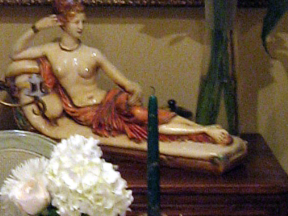Research (Cliquez ici pour la version
française)

I do research on several fronts in Europe. My main field of enquiry in Italy is
how Rome is used as an icon to define the culture of privilege and social status.
There are in fact two Italies and two Romes, the fatherland and the nation. The first is a community that defines a complex group of values attached to
civiltà, the arts of civilised (urban) life. The fatherland stands for continuity and therefore defines a process of social reproduction in which traditional class boundaries are maintained. In contrast, the nation is a mistrusted political community. It is not surprising that Rome’s old bourgeoisie, who the new masters of post-Unification Italy excluded from the nation-building process, claims to embody the values of civiltà.
Ironically, they are not the only ones excluded from power in the new State, since the authorities, mistrustful of the bourgeoisie’s tiers to the Vatican and fearful that the working class would become politically radical, refused to create the infrastructure that could have favoured industrialisation. The “little people”, the popolo, were instead transformed into the mythical heroes of an imaginary resistance to Church domination.
The result is an uneasy marriage, as bourgeoisie and popolo vie for the right to be the central protagonists in the myth of Rome the Eternal.
I have also conducted research in a peasant community in Abruzzo, where I analysed the demographic dynamics of a peasant village from the 18th century onward. The results are not yet published, but some interesting conclusions emerge from the data. These contradict widespread views of peasant societies as uniform and male-dominated.
1) Since women in this part of Italy can inherit land, they delay marrying since in the local patriarchal culture men would take control of “family” property (though women retain title).
2) Men and women have different marriage strategies. The system of partible inheritance means that women generally receive (or will receive) a parcel of land, while men can be left with sheep and no land. These shepherds lead lonely lives unless then can marry a woman with land. Who would marry such men, since the husband would assume control of the family capital? (In fact, there is a local tradition of capture marriage). Women thus tend to marry richer men who are already proprietors. Men, however, especially the poorer men without land, are willing to marry even the poorest of women, since they will some inherit land.
3) As a result, women who emigrate tend to stay in the region, marrying richer men from nearby villages; men, however, tend to emigrate abroad.

My earlier research on the Sekani, an Athapascan speaking people of northern British Columbia, concentrated on
identifying the silent political dimensions of myth.
Like many semi-nomadic hunters, the Sekani have no history in our sense of the word. They cannot depend on the past to structure the present. Instead, they believe in an invisible yet powerful dimension dominated by the primordial power left over from the time of creation. This can be transmitted to humans by a few tutelary animals when men undergo the vision quest, in which they temporarily transform themselves into the symbolic prey of these powerful spirit-animals. The rule of silence that surrounds these contacts means that there is no formal political structure to legitimate differences in individual power. These remain unmarked, and a functioning community of “noisy” collaborating individuals can emerge in the silence.
I continue to do research on
the role of the Self
and neo-cosmopolitanism
in the contemporary world.
These various projects are all inspired by my interest in the imaginary as a
place where each individual creates his or her community.

